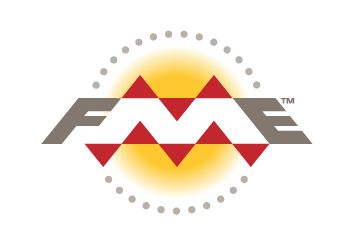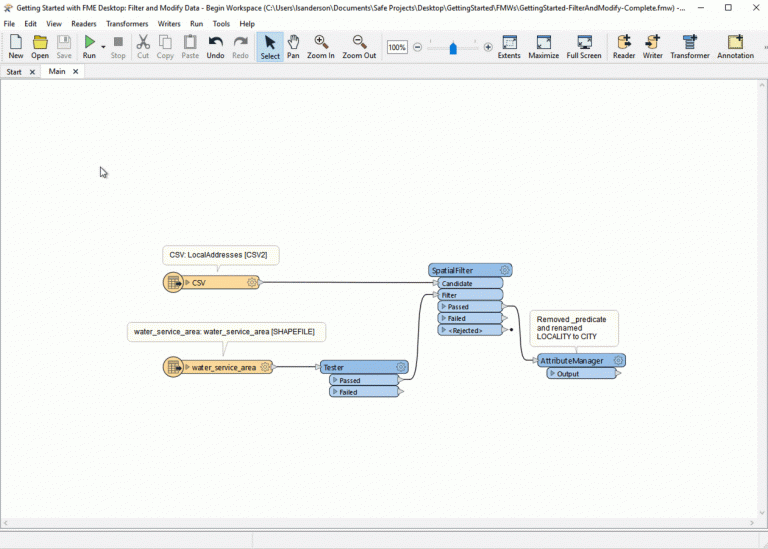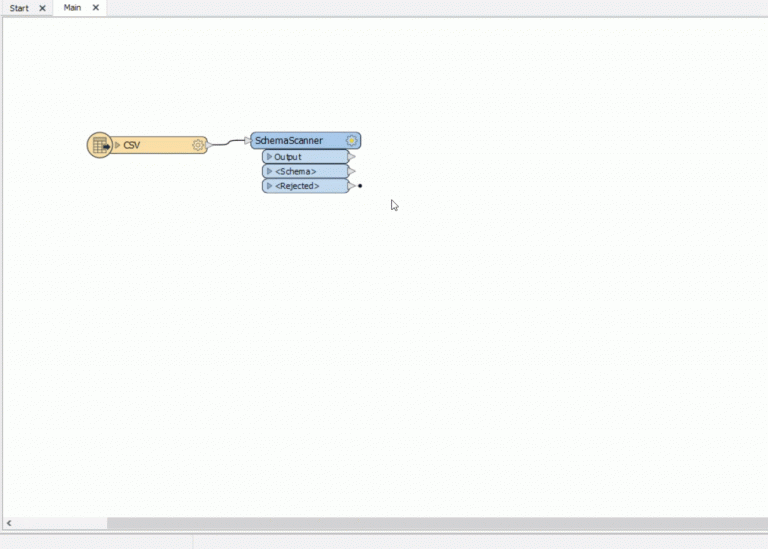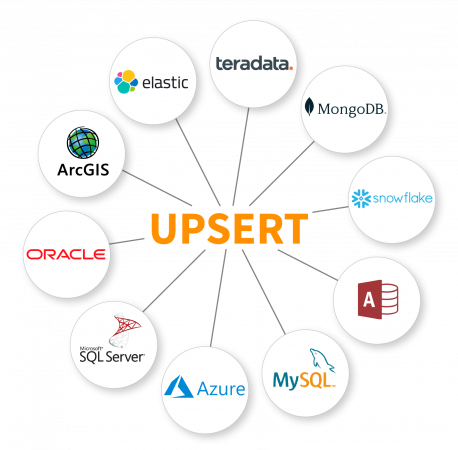FME 2022.1
FME 2022.1 New Features
The eagerly awaited FME 2022.1 release is now available for download from Safe Software. FME 2022.1 makes new things possible with more speed and simplicity to help your organisation make effective data-driven decisions. So dive in and see what’s new!

Enhance Collaboration And Communication
Visually Compare And Merge Workspaces
This exciting new feature allows users to collaborate with team members and maintain workspace updates in a simple and intuitive interface. Now, you can compare two workspaces side-by-side to see the changes that were made and instantly merge changes together. Easily manage and review your work in a secure and reliable environment, without leaving Workbench. And the best part? No coding required.


Identify Runtime User
Safe Software have made it easy for admins and authors to see who accessed and ran an authenticated Workspace App in the Jobs history page. Gain visibility into user data to troubleshoot or send timely communications to the right people.
Improve Data Quality
Achieve high data quality and reduce storage cost with dynamic control of large datasets in your enterprise systems. Take the guesswork out of the process and produce best-fit data outputs at runtime with SchemaScanner, helping you manage active metadata and detect schema drift.
The enhanced EsriReprojector transformer now supports vertical and time-dependent coordinate systems. Make time-dependent transformations and position your data within an epoch.

Ultimate Time Savings

FME 2022 continues to drive speed to insight to help you advance your spatial analysis and unlock new opportunities. We’ve fine-tuned the inner workings of FME to help you tackle datasets of any size, enabling you to make data-driven decisions and achieve business results faster and easier than ever before.
You can now update records in one call with UPSERT* when writing to a database, helping reduce workflow complexity, increase efficiency, and improve data integrity.
Flexible Automation At Scale
Allocate resources where you need them the most. With the addition of Server Analytics, you’ll gain increased control over engine assignments to help you optimize future workloads. See historical data of running jobs at various time intervals and uncover trends that allow you to know when and where to add additional data processing resources.

Increased Organisational Security
With FME 2022.1, Safe Software have introduced the ability to centralise user authentication with SAML 2.0. Integrate FME Server with your existing identity providers and manage credentials through one centralised system.






 When you are still in a testing phase then use “Redirect to Inspection Application”. This means you don’t alter your destination dataset and your output goes directly to the Inspector. You can run your process as many times as you want until you get it just right, the data is never written until you turn off this option. Especially important when you are making edit within a database and you only have one chance to get it right.
When you are still in a testing phase then use “Redirect to Inspection Application”. This means you don’t alter your destination dataset and your output goes directly to the Inspector. You can run your process as many times as you want until you get it just right, the data is never written until you turn off this option. Especially important when you are making edit within a database and you only have one chance to get it right.










 The ability to save workspaces as templates was added in 2011 though it still isn’t as widely used as I would like! A template is basically a saved workspace, with the inclusion of the data required to run. Using a template means you can bundle everything together and provide to another user….very handy for sharing workspaces with your colleagues.
The ability to save workspaces as templates was added in 2011 though it still isn’t as widely used as I would like! A template is basically a saved workspace, with the inclusion of the data required to run. Using a template means you can bundle everything together and provide to another user….very handy for sharing workspaces with your colleagues.









 You can also specify if this counter sequence is unique throughout the whole workspace by using the same sequence on multiple counter transformers or using a unique sequence to that single counter. This transformer means you can create unique values without using any complex expressions, calculators or calling database sequences.
You can also specify if this counter sequence is unique throughout the whole workspace by using the same sequence on multiple counter transformers or using a unique sequence to that single counter. This transformer means you can create unique values without using any complex expressions, calculators or calling database sequences.




